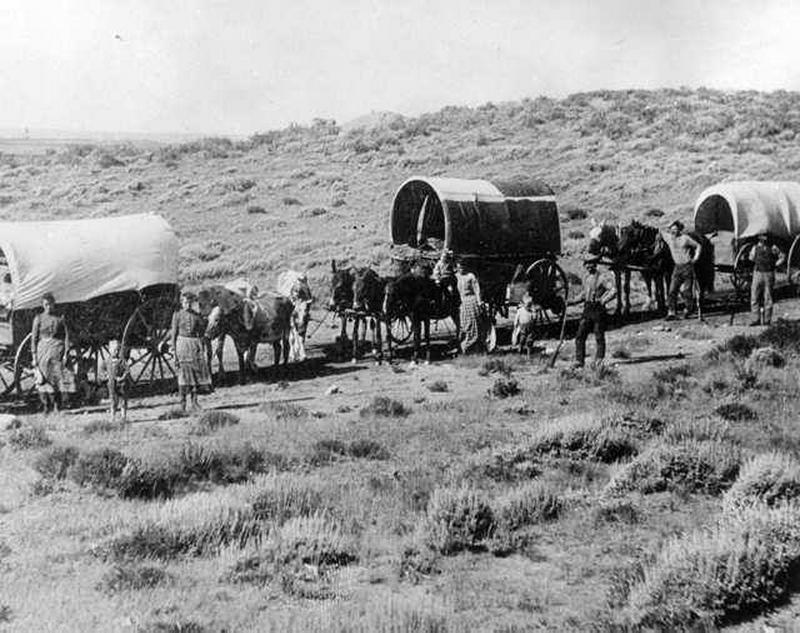Vintage Photos Of Pioneer Life In The Old West
By | February 19, 2017

In the 1800’s many Americans left the populated regions and ventured west to develop and settle in new lands. Unlike the city-dwellers in the east, Pioneers had to be self-reliant and make the most of their natural surroundings.
After a long journey in a horse-drawn carriage, the pioneer family’s first task was to build shelter. If they settled in a forest clearing, they would use an axe to chop saplings and trim poles in order to build a cabin. Windows and doors were carefully sawed open, then covered with a quilt which was weighted by a log. The roof was made with thatched tree-bark. If the family settled in the more ideal “Great Plains” area, their shelter was built with the deeply rooted grass that was common in that region. Trenches were dug out and the material was piled onto each other like bricks, leaving out spaces for windows and doors. Roofs were made with the poles from willow thickets and covered with a layer of sod. Although these houses were cool in the summer and warm in the winter, they offered little protection from the spring rains.
Before their farms were ready, new settlers ventured out to gather wild fruits, nuts and berries. Saline streams provided salt and the sap of maple trees were boiled to make maple sugar. Instead of tea and coffee, hot beverages were made from boiling wild grasses and roots.
Pioneer families were functionally large and their working days were dictated by sunlight. Cradles were never empty and once the cabins and barns were built, and the land prepared for crops, every member of the family had a role to play. Children as young as four were given chores. They would fetch water from streams, keep watch on the fire, milk cows, or churn cream into butter. When they were old enough, the boys worked closely with their fathers, learning how to farm, clear land, chop wood, build fences, and hunt for game. Older girls were responsible for caring for their younger siblings while their mothers worked.
Pioneer women maintained and provided for the household. They used wood ash to make soap, and tallow (sheep and cattle fat) to make candles. All the family’s clothing was made by the women, who learned to sew at an early age. They tanned animal skin into leather, and used spinning wheels to turn wool into yarn and flax into thread. In addition to helping the farmer in the field, women also tended to the garden which provided vegetables for the family.
Because these frontier villages were fairly isolated, the locals had to provide their own medicine for the sick. The women learned how to use herbs for healing. Pennyroyal was used to purify the blood, boneset for fever, horehound for coughs, and ginseng was a valuable tonic. For chest colds, goose grease was rubbed on the chest, then a mustard plaster was applied.
As more settlers came, the villages expanded. School rooms were built for the children, but classes were only held during winter and summer when there were no crops to harvest. Neighbours were also vital and would help each other in times of need. If someone was building a barn, they all offered assistance. While the men worked on the barn, the women would provide lunch and have a little picnic at the site. When the barn was finished, everyone celebrated by square-dancing and singing folk songs like “skip-to-my-Lou”.
Despite these joyous moments, the quality of pioneer life was dictated by the weather. Droughts and insects endangered the crops which they needed to store for the winter. Wildfires and tornadoes also threatened to destroy their homes and barns. It wasn’t an easy life in the Old West, but the pioneers were content.


